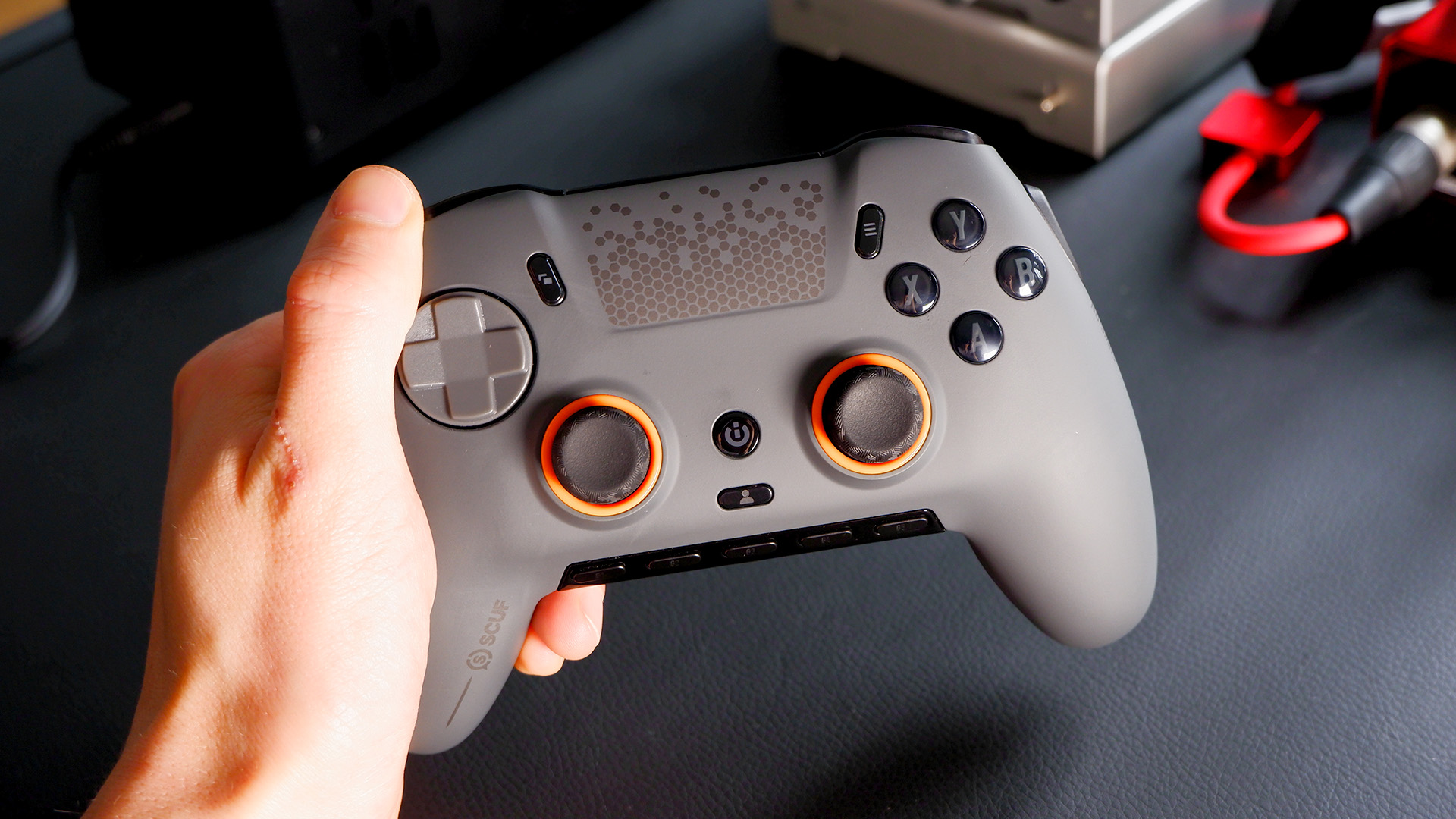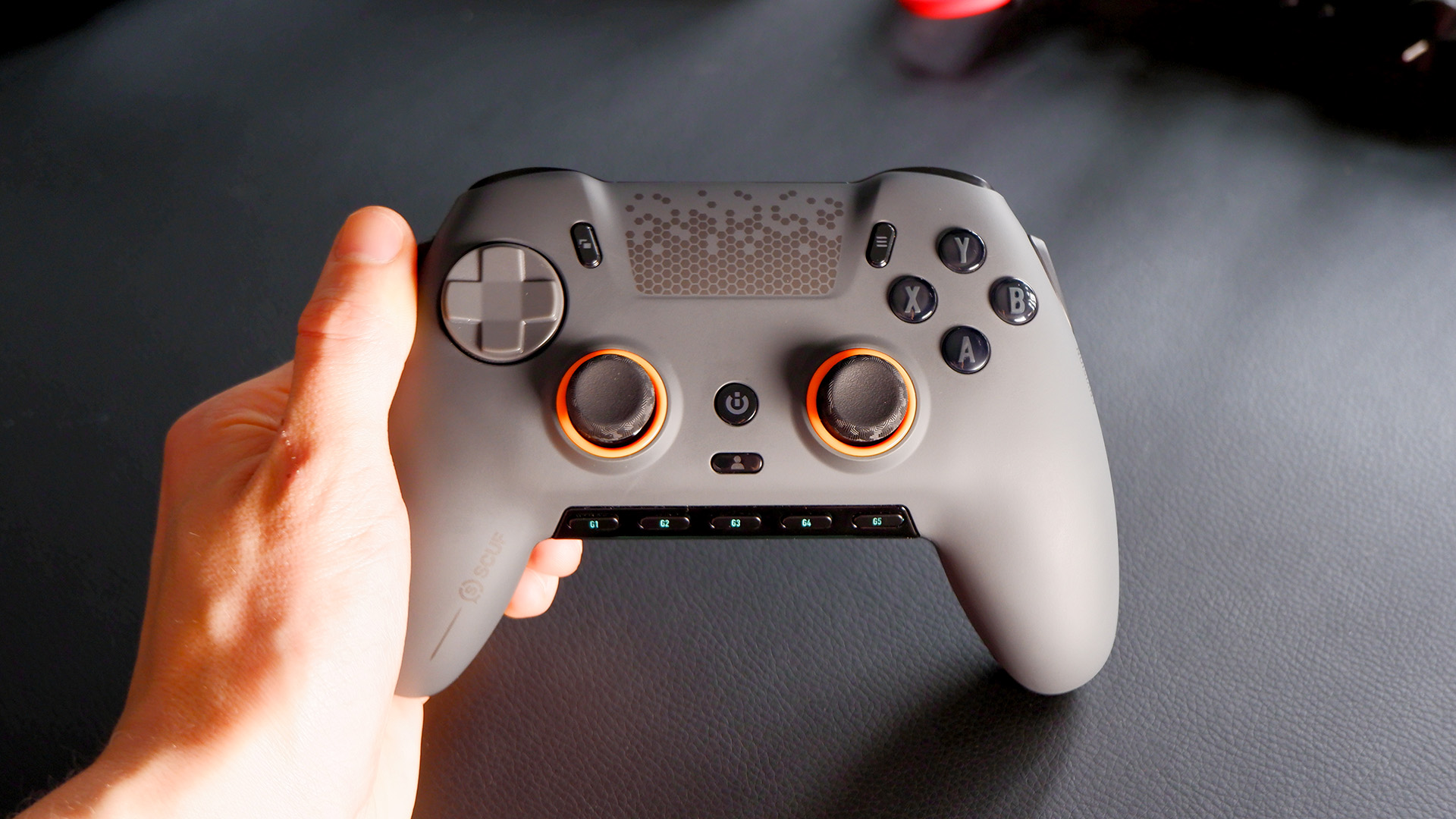Our Verdict
The Scuf Envision Pro is a fine thing to behold and will suit any heavy macro user to a T. The lack of Hall effect sticks and heavy reliance on the iCUE app give me pause for thought, however, and these misses make the price tag harder to justify.
For
- Responsive, clicky switches
- Feels great in hand
- Massively customisable
- Easy macro programmer
- Useful 'SAX' buttons
Against
- iCUE is required, if only temporarily
- No Hall effect sticks
- High price
PC Gamer's got your back
The Scuf Envision Pro is a controller built for PC gaming. Imagine that, a whole controller just for us. We've come quite accustomed to borrowing pads from the best consoles that it actually seems a novel idea. Though Microsoft and Sony spend big money on designing their controllers, so what can Corsair-owned Scuf bring to the table?
For starters, a software package exclusive to Windows. The Envision Pro relies heavily on the iCUE application to deliver a range of functionality. Most notable are the five programmable macro G-keys running beneath the twin sticks and controllable via the application. By default these are set to mic mute, volume up and down, volume mute and eco mode. That last one essentially just turns off the RGB lighting that illuminates the macro buttons and a light bar beneath them. It's possible to program the G-keys to pretty much any function, though I stuck to the default options. That's because there are more handy buttons available for programming macros to use while gaming.
There are a few extra buttons littered around the Envision Pro. Each shoulder has a programmable button easily pressed by your lower index finger while gaming. What Scuf calls SAX buttons. The rear of the controller offers four more shortcuts to add any macros or inputs desired. Even the standard d-pad, thumbsticks, triggers, bumpers, and X and Y buttons are programmable from within iCUE—suffice to say it offers plenty of customisation options.
I've stuck with only a handful of shortcuts: a couple of Destiny 2 abilities on the rear and a macro to the upper right button to save clips in the Nvidia App with Shadowplay. I'll hasten to add I don't usually play Destiny 2 with a controller, no judgement if you do, but I usually remap a few abilities to my mouse and it seemed fitting to do the same with the Envision Pro.
Each key is within easy reach, and once I'd taught my muscle memory to compress the side of my index finger into the SAX (sounds so wrong), I was back to my regular grenade spamming ways in Destiny 2.
The process of adding, removing or modifying macros is simple. iCUE offers a modular approach built around recording and reconfiguring each 'event', which is a key press, wait time or action. It's definitely one of the smoother macro experiences around and something iCUE does extremely well. I'm using a compact keyboard that requires a function layer to access some keys, which has been known to mess with macros, but I could easily delete any and all extraneous commands in the macro list and get each one set up just right.
Many of the buttons on the Envision pro are of the clicky variety—my favourite. Courtesy of Omron switches, like those often employed in the best gaming mice, this controller offers a snappy, tactile response to rival the best of the best. I could publish a video of me tapping each button and post it to social media labelled as ASMR, but for all our sake's, I won't—I could, but… I might.
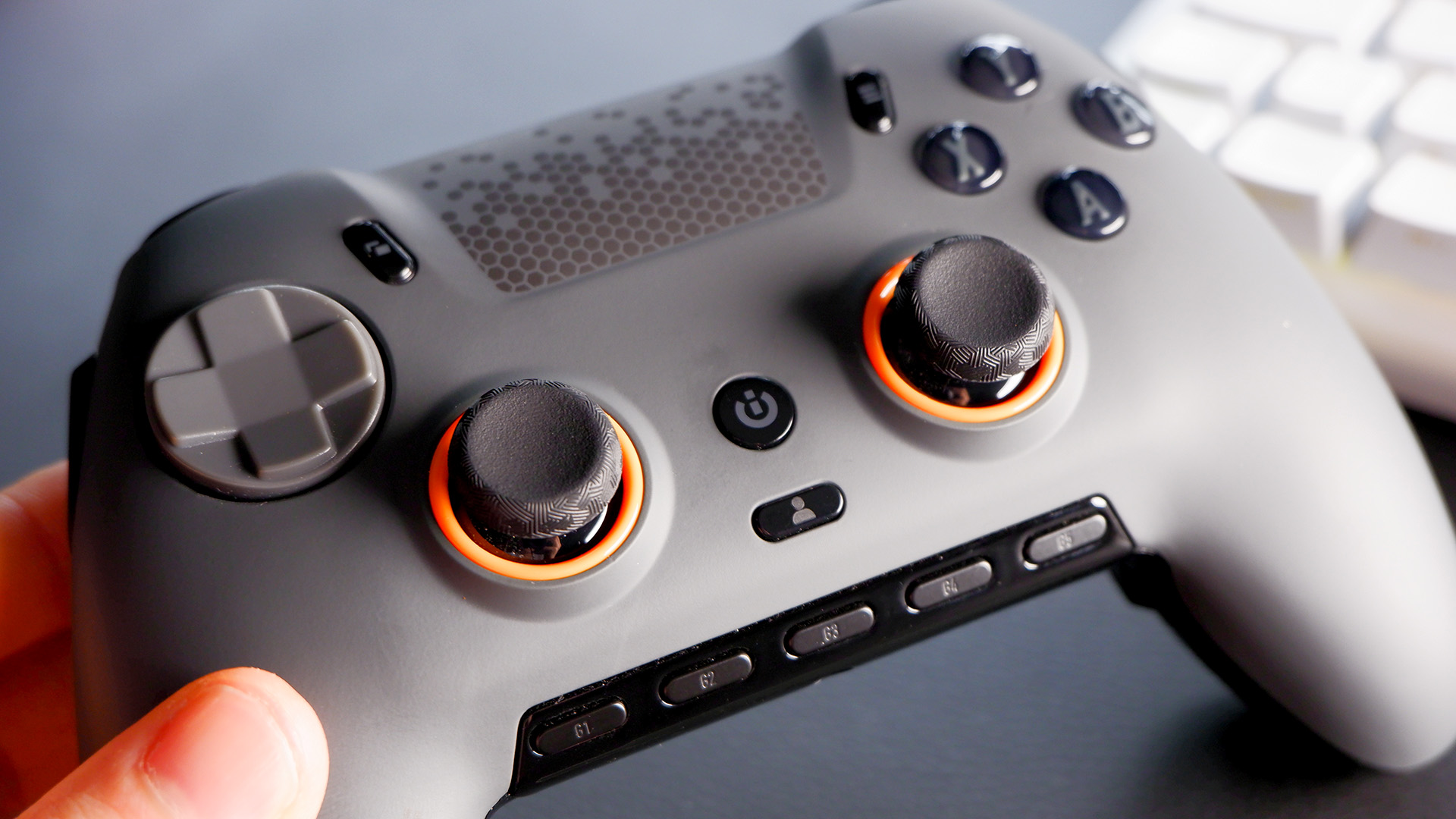

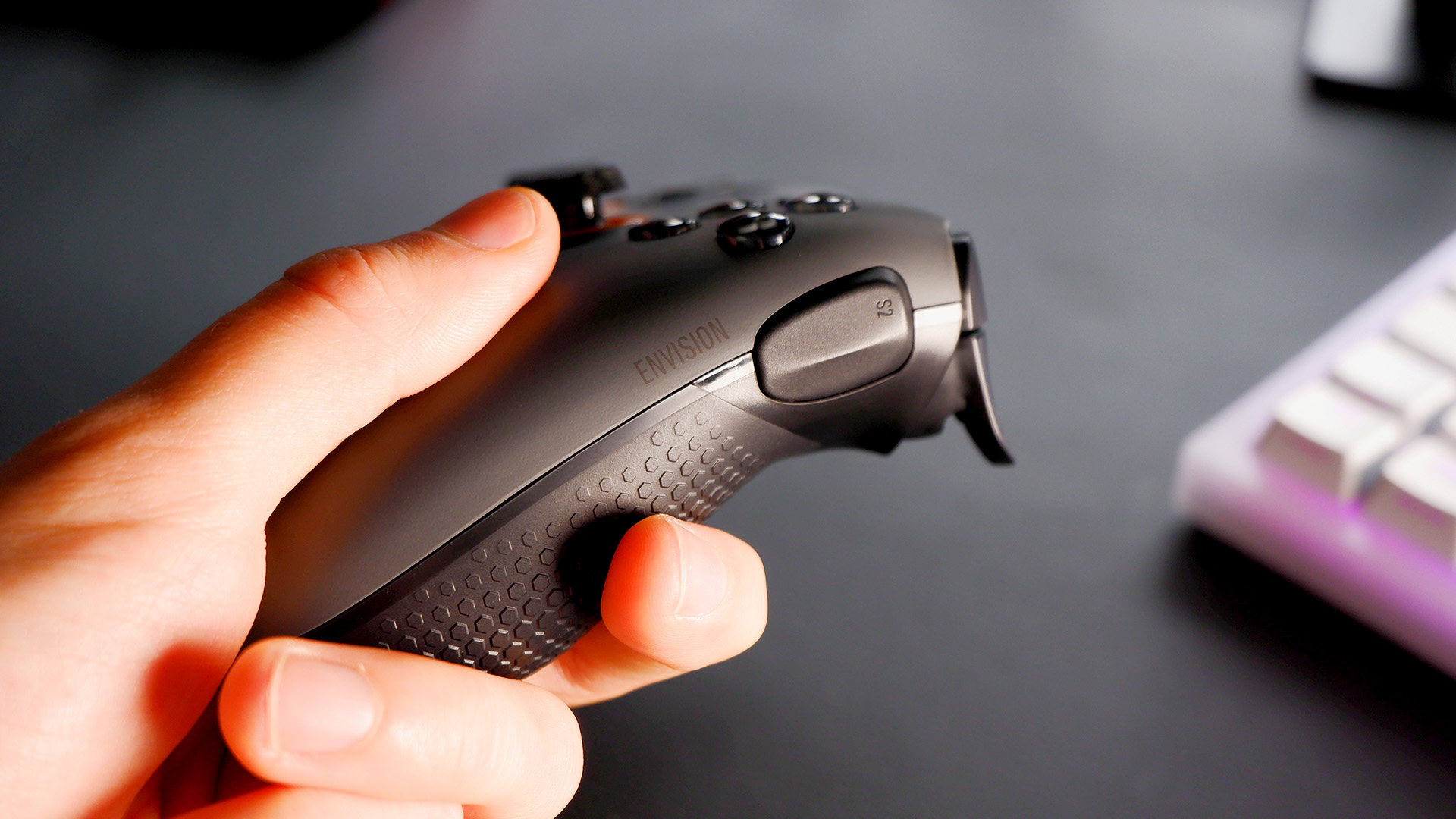
Following in the footsteps of Sony's PlayStation pads, the Envision Pro offers a symmetrical twin-stick layout. I'm stepping outside of the beef between Xbox and Sony fans to say I enjoy both layouts—a proper fence sitter, me—but I do tend to lean towards the Sony side when pushed. This controller has a particularly comfortable symmetrical stick design, too. It's chunky and bulbous in all the right places to offer a firm grip and push into my palms while I'm resting my thumbs on either stick.
Thanks to a soft-touch finish on the front and textured grips on the rear, the Envision Pro feels great to hold. To my surprise, at 289 grams, it's only a touch heavier than Sony's DualSense at 277 grams, and near enough the same as the Xbox Wireless Controller at 288 grams. I will admit the Envision Pro felt heavier to me, but it's perhaps the balance that threw me.
The lighting on the pad is easy enough to set-up, though a little underwhelming. While I'm gaming the backlit macro keys are handy for quick access, but I can't really make out the light strip. That's probably a good thing—Scuf is saving me from myself and the Envision Pro from a poor battery life—but I set the RGB to a generic rainbow rotation and haven't touched it since. It just feels a bit frivolous.
You don't have to have Corsair's iCUE software running to use the Envision Pro, as it offers some onboard memory to save profiles. Though you will have to go through the initial set-up in iCUE at least once. To be absolutely sure this works, I tried it myself, and I can confirm the controller still functions without iCUE installed. It's just needlessly complicated to get to this point. Any other controller I've used would just work, out of the box, once plugged in via USB. The Envision Pro doesn't and this feels like a big miss for a PC-first pad.
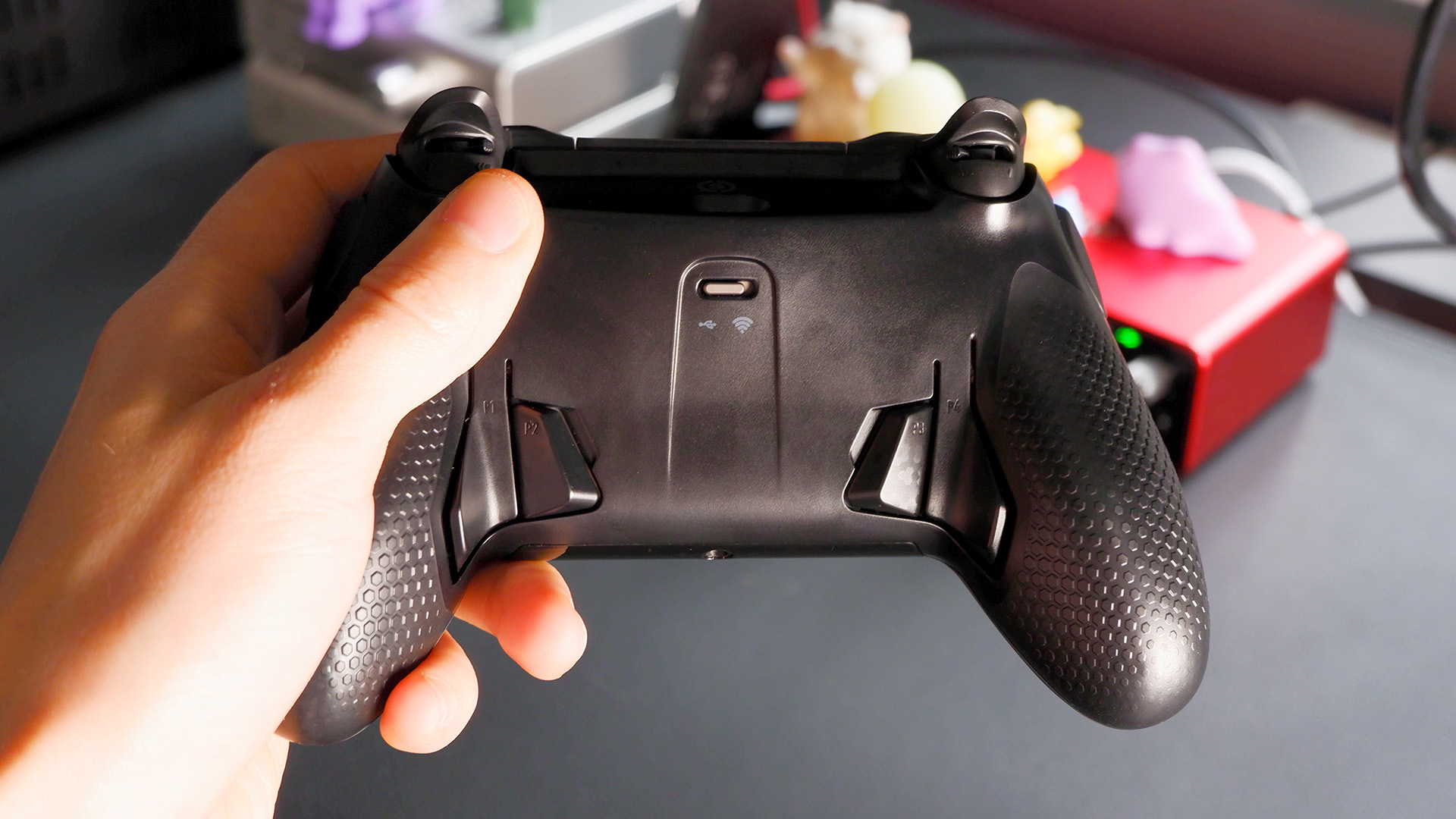
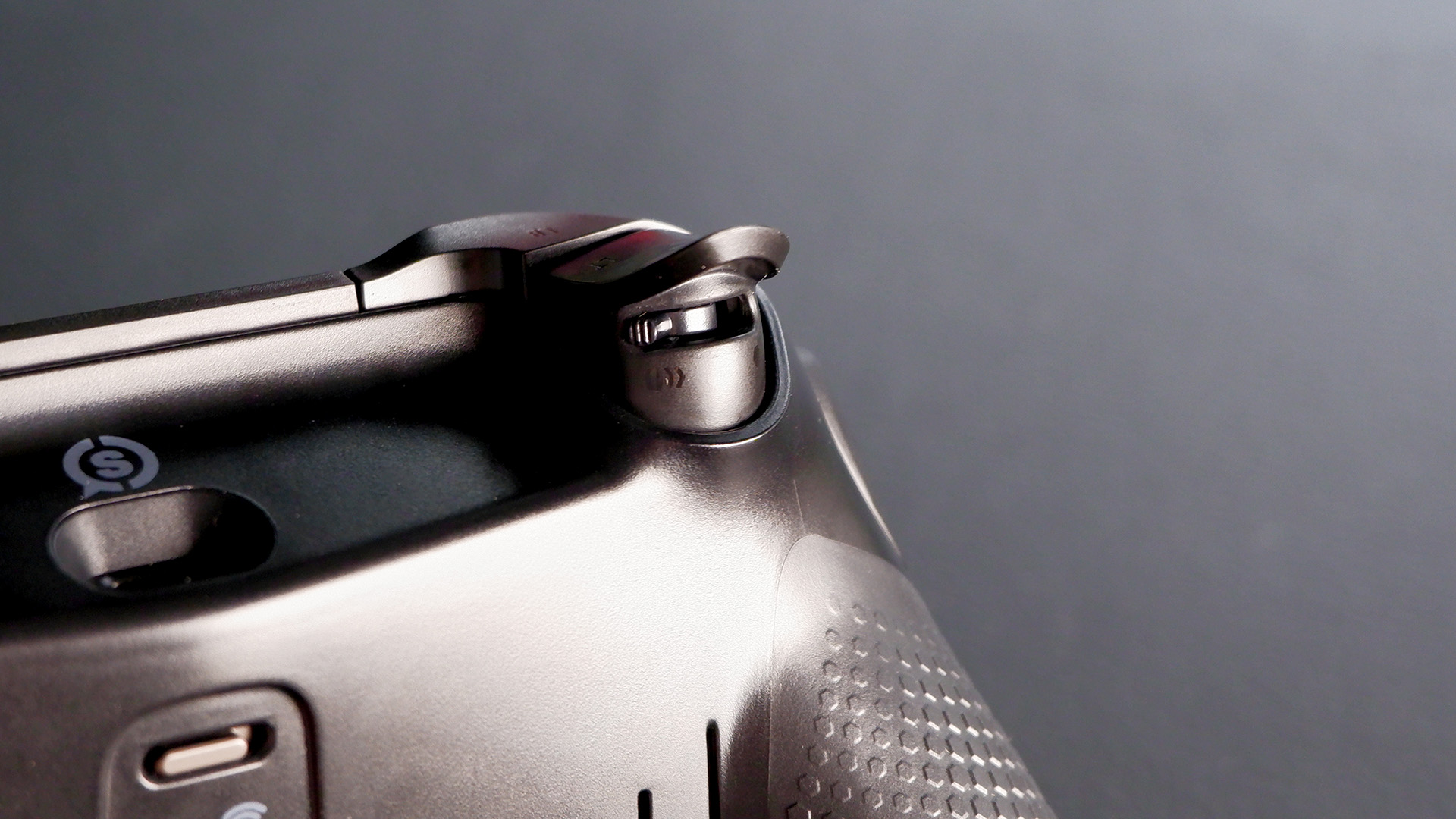
✅ You're a macro power-user: If you're chasing high levels of customisation for running multiple macro set-ups across multiple games, the adjustable and easy to access profiles on the Envision Pro make it a good fit.
✅ You want a controller that's PC first: No more playing second fiddle to consoles. The Envision Pro is optimised for PC and PC only.
❌ You're worried about stick drift: The best way to deal with stick drift is to have sticks that are practically unable to get it in the first place. That's Hall effect sticks, and the Envision Pro doesn't have them.
❌ You just want the basics: What are you even doing reading this far through the review if you just want a basic controller? Buy either the DualSense or Xbox Wireless pad for a cheap and competent alternative that nails the basics for a lot less money than this.
Another thing I consider a miss with the Envision Pro is the lack of Hall effect sticks. I've spoken before about why I feel Hall effect is a must-have for any modern high-end controller —in essence, it comes down to an inherent resistance to stick drift with Hall effect thumbsticks, which more traditional potentiometer sticks are susceptible to. I haven't run into any stick drift on the Envision Pro but these issues tend to crop up after extended use and once the potentiometer is worn down.
I was expecting to see Hall effect on the specs list for the Envision Pro, and with a price tag of $180/£180 the lack thereof does give me pause. That's four times the price of an Xbox Wireless Controller and justification enough for me being particularly picky about what the Envision Pro offers.
Suffice to say the Scuf Envision Pro is a mixed bag—more positives than negatives, at least. It's a controller I find myself reaching for more than my first generation Xbox Elite pad and it feels great to use and perfectly comfortable for longer sessions. I played most of Alan Wake 2 with the Envision Pro and felt like it was a great companion for the entire duration of that weird and wonderful story. The Slipstream Wireless connection never let me down once.
Yet the Envision Pro is also expensive and not the slam dunk I'd like it to be for the money. The lack of Hall effect sticks and clunky connectivity sans iCUE just take the shine off a controller I've no serious qualms with otherwise, besides a high price. A controller designed from the ground up for PC is a great concept; with a few tweaks Scuf could have a PC controller that's as unbeatable as it should be for the money.
The Scuf Envision Pro is a fine thing to behold and will suit any heavy macro user to a T. The lack of Hall effect sticks and heavy reliance on the iCUE app give me pause for thought, however, and these misses make the price tag harder to justify.

Jacob earned his first byline writing for his own tech blog. From there, he graduated to professionally breaking things as hardware writer at PCGamesN, and would go on to run the team as hardware editor. He joined PC Gamer's top staff as senior hardware editor before becoming managing editor of the hardware team, and you'll now find him reporting on the latest developments in the technology and gaming industries and testing the newest PC components.
